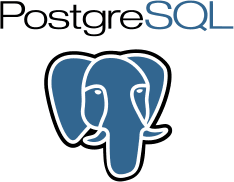Summary: in this tutorial, you will learn about PostgreSQL and its applications.
What is PostgreSQL
 Let’s start with a simple question: what is PostgreSQL?
Let’s start with a simple question: what is PostgreSQL?
PostgreSQL is an advanced, enterprise-class, and open-source relational database system. PostgreSQL supports both SQL (relational) and JSON (non-relational) querying.
PostgreSQL is a highly stable database backed by more than 20 years of development by the open-source community.
PostgreSQL is used as a primary database for many web applications as well as mobile and analytics applications.
PostgreSQL’s community pronounces PostgreSQL as /ˈpoʊstɡrɛs ˌkjuː ˈɛl/.
History of PostgreSQL
The PostgreSQL project started in 1986 at Berkeley Computer Science Department, University of California.
The project was originally named POSTGRES, about the older Ingres database which was also developed at Berkeley. The goal of the POSTGRES project was to add the minimal features needed to support multiple data types.
In 1996, the POSTGRES project was renamed to PostgreSQL to clearly illustrate its support for SQL. Today, PostgreSQL is commonly abbreviated as Postgres.
Since then, the PostgreSQL Global Development Group, a dedicated community of contributors continues to make the releases of the open-source and free database project.
Originally, PostgreSQL was designed to run on UNIX-like platforms. And then, PostgreSQL evolved to run on various platforms such as Windows, macOS, and Solaris.
Common Use Cases of PostgreSQL
The following are the common use cases of PostgreSQL.
1) A robust database in the LAPP stack
LAPP stands for Linux, Apache, PostgreSQL, and PHP (or Python and Perl). PostgreSQL is primarily used as a robust back-end database that powers many dynamic websites and web applications.
2) General-purpose transaction database
Large corporations and startups alike use PostgreSQL as the primary database to support their applications and products.
3) Geospatial database
PostgreSQL with the PostGIS extension supports geospatial databases for geographic information systems (GIS).
Language support
PostgreSQL supports the most popular programming languages:
- Python
- Java
- C#
- C/C++
- Ruby
- JavaScript (Node.js)
- Perl
- Go
- Tcl
PostgreSQL feature highlights
PostgreSQL has many advanced features that other enterprise-class database management systems offer, such as:
- User-defined types
- Table inheritance
- Sophisticated locking mechanism
- Foreign key referential integrity
- Views, rules, subquery
- Nested transactions (savepoints)
- Multi-version concurrency control (MVCC)
- Asynchronous replication
The recent versions of PostgreSQL support the following features:
- Native Microsoft Windows Server version
- Tablespaces
- Point-in-time recovery
And more new features are added in each new release.
PostgreSQL is designed to be extensible. PostgreSQL allows you to define your data types, index types, functional languages, and so on.
If you don’t like any part of the system, you can always develop a custom plugin to enhance it to meet your requirements such as adding a new optimizer.
Who uses PostgreSQL
Many companies have built products and solutions based on PostgreSQL. Some featured companies are Apple, Fujitsu, Red Hat, Cisco, Juniper Network, Instagram, and so on.